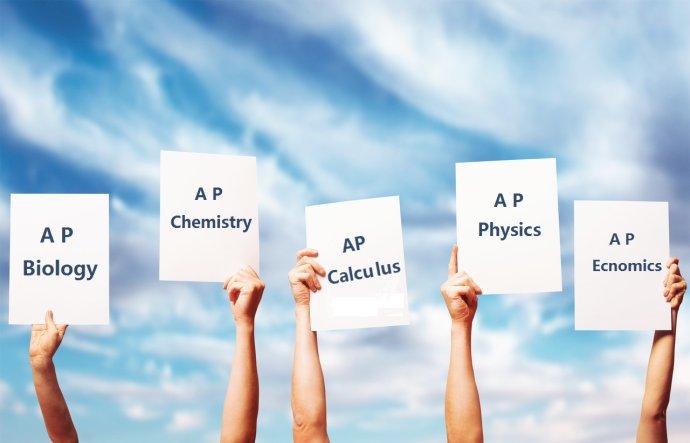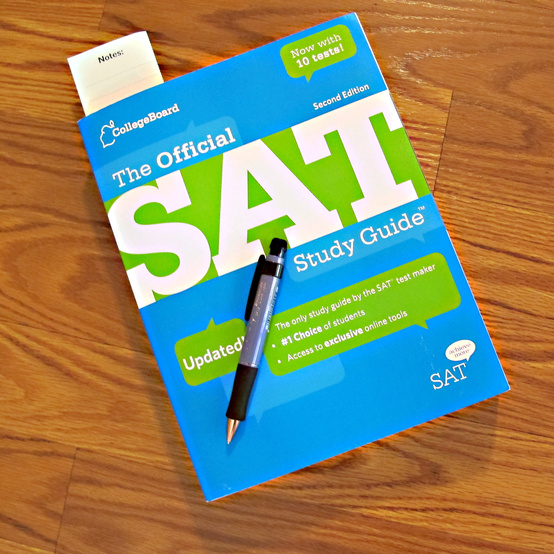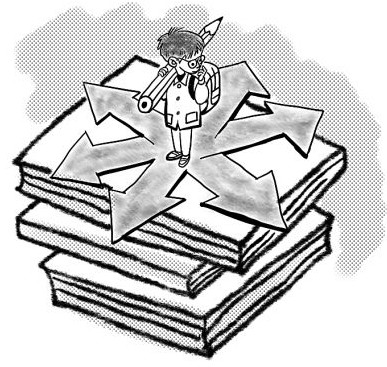 返回
教育头条
返回
教育头条

历年经典SAT真题都在这里了
Questions 1-10 are based on the following passage.
Reading Test
This passage is adapted from Nikolai Gogol, “ The Mysterious Portrait,” Qriginally published in 1835.
Young Tchartkoff was an artist of talent, which promised great things: his work gave evidence of observation, thought, and a strong inclination to approach nearer to nature.
“Look here, my friend,” his professor said to him more than once, “you have talent; it will be a shame if you waste it: but you are impatient; you have but to be attracted by anything, to fall in love with it, you become engrossed with it, and all else goes for nothing, and you won’t even look at it. (第四题A)See to it that you do not become a fashionable artist. At present your colouring begins to assert itself too loudly; and your drawing is at times quite weak; you are already striving after the fashionable style, because it strikes the eye at once. (第四题B)Have a care! society already begins to have its attraction for you: I have seen you with a shiny hat, a foppish neckerchief. (第四题C)It is seductive to paint fashionable
little pictures and portraits for money; but talent is ruined, not developed, by that means. Be patient; think out every piece of work, discard your foppishness; let others amass money, your own will not fail you.”
The professor was partly right. Our artist sometimes wanted to enjoy himself, to play the fop, in short, to give vent to his youthful impulses in some way or other; but he could control himself withal. (第四题D)At times he would forget everything, when he had once taken his brush in his hand, and could not tear himself from it except as from a delightful dream. His taste perceptibly developed. He did not as yet understand all the depths of Raphael, but he was attracted by Guido’s broad and rapid handling, he paused before Titian’s portraits, he delighted in the Flemish masters. The dark veil enshrouding theancient pictures had not yet wholly passed away from before them; but he already saw something in them, though in private he did not agree with the professor that the secrets of the old masters are irremediably lost to us. It seemed to him that the nineteenth century had improved upon them considerably, that the delineation of nature was more clear, more vivid, more close. It sometimes vexed him when he saw how a strange artist, French or German, sometimes not even a painter by profession, but only a skilful dauber, produced, by the celerity of his brush and the vividness of his colouring, a universal commotion, and a massed in a twinkling a funded capital. This did not occur to him when fully occupied with his own work, for then he forgot food and drink and all the world. But when dire want arrived, when he had no money where with to buy brushes and colours, when his implacable landlord came ten times a day to demand the rent for his rooms, then did the luck of the wealthy artists recur to his hungry imagination; then did the thought which so often traverses Russian minds, to give up altogether, and go down hill, utterly to the bad, traverse his. And now he was almost in this frame of mind.
“Yes, it is all very well, to be patient, be patient!”he exclaimed, with vexation; “but there is an end to patience at last. (第九题A)Be patient! but what money have I to buy a dinner with to-morrow? No one will lend me any. If I did bring myself to sell all my pictures and sketches, they would not give me twenty kopeks for the whole of them. (第九题B)They are useful; I feel that not one of them has been undertaken in vain; I have learned something from each one. Yes, but of what use is it? Studies, sketches, all will be studies, trial-sketches to the end. And who will buy, not even knowing me by name? (第九题C)Who wants drawings from the antique, or the life class, or my unfinished love of a Psyche, or the interior of my room, or the portrait of Nikita, though it is better, to tell the truth, than the portraits by any of the fashionable artists? Why do I worry, and toil like a learner over the alphabet, when I might shine as brightly as the rest, and have money, too, like them?”(第九题D)
Questions
BE CONSCIENTIOUS
1、The passage is primarily focused on the
A) influence of a professor on one of his students.
B) struggles of a young artist c
onflicted about his values.
C) descent of a character into hopelessness and madness.
D) personal life of a young painter in relation to his art.
2、The first paragraph serves mainly to establish the
A) ironic outlook of the narrator.
B) central conflict depicted in the passage.
C) main character’s defining artistic traits.
D) relationship between two characters.
3、The passage suggests that Tchartkoff ’s professor believes that great art should be
A) technically accomplished and not garish.
B) pleasing to the eye but not overly popular.
C) original in approach and spontaneous in execution.
D) representative of the artist’s morals and beliefs.
4、Which choice provides the best evidence for the answer to the previous question?
A) lines 5-10 (“Look . . . at it”)
B) lines 11-15 (“At present . . . once”)
C) lines 15-17 (“Have . . . neckerchief ”)
D) lines 23-27 (“The professor . . . withal”)
5、As used in line 11, line 14, and line 18, the word “fashionable” most nearly means
A) stylish.
B) trendy.
C) modern.
D) conventional.
6、According to the passage, one point of disagreement between Tchartkoff and his professor concerns whether
A) making money from selling paintings destroys artistic integrity.
B) fashionable artists are capable of making enough money from their art to support themselves.
C) nineteenth-century painters had been able to expand on the insights of the old masters.
D) nonprofessional painters are capable of producing serious artworks.
7、As used in line 50, “want” most nearly means
A) need.
B) absence.
C) ambition
D) greed.
8、The passage suggests that to some extent, Tchartkoff finds maintaining his high artistic standards to be a
A) means of attaining short-lived fame as opposed to a lasting reputation.
B) goal less important for his professor than it is for himself.
C) necessary pathway to a goal he now seeks to accomplish.
D) laborious undertaking that does not provide suitable compensation.
9、Which choice provides the best evidence for the answer to the previous question?
A) lines 59-61 (“Yes . . . last”)
B) lines 63-65 (“If I . . . them”)
C) lines 69-70 (“And who . . . name”)
D) lines 74-76 (“Why . . . them”)
10、The last paragraph primarily serves to
A) suggest contradictions in Tchartkoff ’s argument.
B) expose the hypocrisy of Tchartkoff ’s mind-set.
C) catalog Tchartkoff ’s frustrations with his situation.
D) examine the subject matter of Tchartkoff ’s paintings.
建议答题时间:13分钟
Reading Test
This passage is adapted from Nikolai Gogol, “ The Mysterious Portrait,” Qriginally published in 1835.
Young Tchartkoff was an artist of talent, which promised great things: his work gave evidence of observation, thought, and a strong inclination to approach nearer to nature.
“Look here, my friend,” his professor said to him more than once, “you have talent; it will be a shame if you waste it: but you are impatient; you have but to be attracted by anything, to fall in love with it, you become engrossed with it, and all else goes for nothing, and you won’t even look at it. (第四题A)See to it that you do not become a fashionable artist. At present your colouring begins to assert itself too loudly; and your drawing is at times quite weak; you are already striving after the fashionable style, because it strikes the eye at once. (第四题B)Have a care! society already begins to have its attraction for you: I have seen you with a shiny hat, a foppish neckerchief. (第四题C)It is seductive to paint fashionable
little pictures and portraits for money; but talent is ruined, not developed, by that means. Be patient; think out every piece of work, discard your foppishness; let others amass money, your own will not fail you.”
The professor was partly right. Our artist sometimes wanted to enjoy himself, to play the fop, in short, to give vent to his youthful impulses in some way or other; but he could control himself withal. (第四题D)At times he would forget everything, when he had once taken his brush in his hand, and could not tear himself from it except as from a delightful dream. His taste perceptibly developed. He did not as yet understand all the depths of Raphael, but he was attracted by Guido’s broad and rapid handling, he paused before Titian’s portraits, he delighted in the Flemish masters. The dark veil enshrouding theancient pictures had not yet wholly passed away from before them; but he already saw something in them, though in private he did not agree with the professor that the secrets of the old masters are irremediably lost to us. It seemed to him that the nineteenth century had improved upon them considerably, that the delineation of nature was more clear, more vivid, more close. It sometimes vexed him when he saw how a strange artist, French or German, sometimes not even a painter by profession, but only a skilful dauber, produced, by the celerity of his brush and the vividness of his colouring, a universal commotion, and a massed in a twinkling a funded capital. This did not occur to him when fully occupied with his own work, for then he forgot food and drink and all the world. But when dire want arrived, when he had no money where with to buy brushes and colours, when his implacable landlord came ten times a day to demand the rent for his rooms, then did the luck of the wealthy artists recur to his hungry imagination; then did the thought which so often traverses Russian minds, to give up altogether, and go down hill, utterly to the bad, traverse his. And now he was almost in this frame of mind.
“Yes, it is all very well, to be patient, be patient!”he exclaimed, with vexation; “but there is an end to patience at last. (第九题A)Be patient! but what money have I to buy a dinner with to-morrow? No one will lend me any. If I did bring myself to sell all my pictures and sketches, they would not give me twenty kopeks for the whole of them. (第九题B)They are useful; I feel that not one of them has been undertaken in vain; I have learned something from each one. Yes, but of what use is it? Studies, sketches, all will be studies, trial-sketches to the end. And who will buy, not even knowing me by name? (第九题C)Who wants drawings from the antique, or the life class, or my unfinished love of a Psyche, or the interior of my room, or the portrait of Nikita, though it is better, to tell the truth, than the portraits by any of the fashionable artists? Why do I worry, and toil like a learner over the alphabet, when I might shine as brightly as the rest, and have money, too, like them?”(第九题D)
Questions
BE CONSCIENTIOUS
1、The passage is primarily focused on the
A) influence of a professor on one of his students.
B) struggles of a young artist c
onflicted about his values.
C) descent of a character into hopelessness and madness.
D) personal life of a young painter in relation to his art.
2、The first paragraph serves mainly to establish the
A) ironic outlook of the narrator.
B) central conflict depicted in the passage.
C) main character’s defining artistic traits.
D) relationship between two characters.
3、The passage suggests that Tchartkoff ’s professor believes that great art should be
A) technically accomplished and not garish.
B) pleasing to the eye but not overly popular.
C) original in approach and spontaneous in execution.
D) representative of the artist’s morals and beliefs.
4、Which choice provides the best evidence for the answer to the previous question?
A) lines 5-10 (“Look . . . at it”)
B) lines 11-15 (“At present . . . once”)
C) lines 15-17 (“Have . . . neckerchief ”)
D) lines 23-27 (“The professor . . . withal”)
5、As used in line 11, line 14, and line 18, the word “fashionable” most nearly means
A) stylish.
B) trendy.
C) modern.
D) conventional.
6、According to the passage, one point of disagreement between Tchartkoff and his professor concerns whether
A) making money from selling paintings destroys artistic integrity.
B) fashionable artists are capable of making enough money from their art to support themselves.
C) nineteenth-century painters had been able to expand on the insights of the old masters.
D) nonprofessional painters are capable of producing serious artworks.
7、As used in line 50, “want” most nearly means
A) need.
B) absence.
C) ambition
D) greed.
8、The passage suggests that to some extent, Tchartkoff finds maintaining his high artistic standards to be a
A) means of attaining short-lived fame as opposed to a lasting reputation.
B) goal less important for his professor than it is for himself.
C) necessary pathway to a goal he now seeks to accomplish.
D) laborious undertaking that does not provide suitable compensation.
9、Which choice provides the best evidence for the answer to the previous question?
A) lines 59-61 (“Yes . . . last”)
B) lines 63-65 (“If I . . . them”)
C) lines 69-70 (“And who . . . name”)
D) lines 74-76 (“Why . . . them”)
10、The last paragraph primarily serves to
A) suggest contradictions in Tchartkoff ’s argument.
B) expose the hypocrisy of Tchartkoff ’s mind-set.
C) catalog Tchartkoff ’s frustrations with his situation.
D) examine the subject matter of Tchartkoff ’s paintings.
建议答题时间:13分钟
谢谢你,阅读了这篇文章。我是教育宝学习顾问王敏,如何选择SAT是一个比较复杂的问题,SAT市场鱼龙混杂,广告铺天盖地,每家机构都把自己包装的天花乱坠,如何选择一家合适的机构?这是很多人都头疼的问题,选错机构不是费钱,而是浪费时间。教育宝始终保持中立客观,累计服务200万用户,致力于连接培训机构和学员,打造可靠、高效、让人放心的一站式互联网学习服务平台,如果你不知道SAT机构如何选,那么请让我来帮助你,加我微信:18560125702,我会根据你的实际需求,依靠8年从业经验,从海量课程中选择适合您的服务。
在选课过程中如需帮助,您可以加我微信:18560125702,我将为您提供全面专业的选课帮助,让我们一起开始美好的学习之旅吧。返回教育宝头条
【免责声明】本文仅代表作者本人观点,与教育宝无关。教育宝对文中陈述、观点判断保持中立,不对所包含内容的准确性、可靠性或完整性提供任何保证。请读者仅作参考,特此声明!





